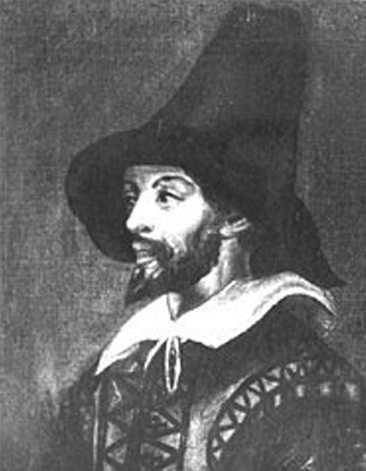7. In which century did Thomas Gainsborough produce his artistic masterpieces?
From Quiz Thomas Gainsborough, Artist
Answer:
the eighteenth
The eighteenth century, although often described as "the golden age of English portrait painting", produced several men of genius - William Hogarth and Joseph Wright of Derby, to name but two - who could not restrict themselves to such a narrow remit as portraiture just because it was so lucrative. Gainsborough deserves to be considered alongside these great artists, in that (although, like Hogarth and Wright, he produced many wonderful and supremely skilful portraits) his main preoccupation is traditionally thought to have lain elsewhere, in landscape painting. In one of his letters the artist, referring to himself in the third person, expressed himself "sick of portraits and wishing to take his Viol de Gamba and walk off to some sweet village where he can paint landskips", and although this can scarcely be taken as his final word on the matter, it remains the case that he continued to paint landscapes enthusiastically throughout his career.
The young Gainsborough was evidently much inspired by the eighteenth-century park scenes of Jean-Antoine Watteau with their pairs of gallant lovers, especially in his youthful untitled oil-painting which has often been supposed to depict the newly-married young painter and his wife seated on a bench in a parkland setting (they appear almost "faux-galant" in Gainsborough's version). As Nicola Kalinsky has observed of this piece, "the decorative leafy setting, complete with an Arcadian temple, and Gainsborough's scintillating handling of paint, are all characteristic of Watteau and the French Rococo".
 Come along to Saint Paul, Minnesota, where the author of "The Great Gatsby" was born. We'll walk a complex city of shadow and light, where F. Scott Fitzgerald grew up.
Come along to Saint Paul, Minnesota, where the author of "The Great Gatsby" was born. We'll walk a complex city of shadow and light, where F. Scott Fitzgerald grew up.  Come along to Saint Paul, Minnesota, where the author of "The Great Gatsby" was born. We'll walk a complex city of shadow and light, where F. Scott Fitzgerald grew up.
Come along to Saint Paul, Minnesota, where the author of "The Great Gatsby" was born. We'll walk a complex city of shadow and light, where F. Scott Fitzgerald grew up.  Guy Fawkes was part of the Gunpowder Plot, a group who planned to blow up Parliament. Does that make him a terrorist or a hero? Let's see what we can find out!
Guy Fawkes was part of the Gunpowder Plot, a group who planned to blow up Parliament. Does that make him a terrorist or a hero? Let's see what we can find out!  Quick Question
Quick Question = Top 5% Rated Quiz,
= Top 5% Rated Quiz,
 Top 10% Rated Quiz,
Top 10% Rated Quiz,
 Top 20% Rated Quiz,
Top 20% Rated Quiz,
 A Well Rated Quiz
A Well Rated Quiz